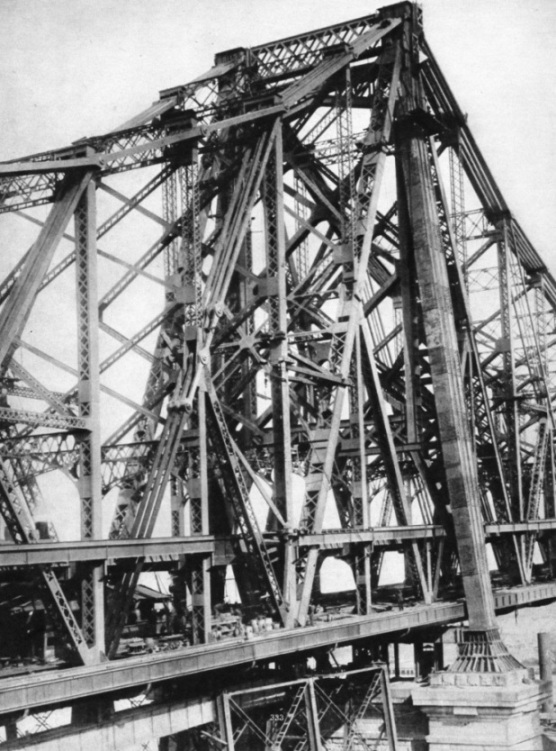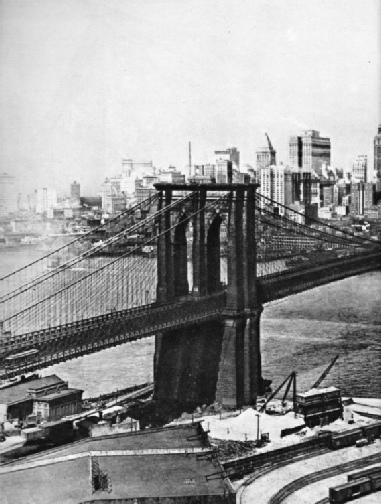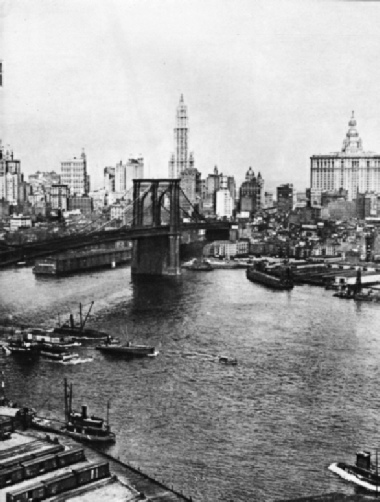

© Wonders of World Engineering 2014-




Part 11
Part 11 of Wonders of World Engineering was published on Tuesday 11th May 1937, price 7d.
Part 11 includes a photogravure supplement featuring some of New York’s Giant Bridges. It illustrates the article of the same title, as does the colour cover (and see below).
The Cover
The cover this week shows the George Washington Bridge, one of the most recent of the huge bridges which are such a prominent feature of New York. Completed in 1932, the bridge spans the Hudson River between Tenafly, New Jersey, and Washington Heights, New York.
This illustration was later used as the colour plate in part 36 to illustrate an article on the George Washington Bridge.
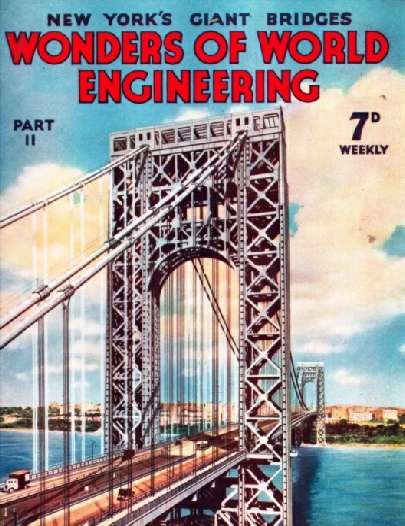
Contents of Part 11
Britain’s Biggest Ship Canal (Part 2)
The story of the Manchester Ship Canal, concluded from part 10.
Story of the Diesel Engine
The remarkable increase in the use of engines driven by heavy oil fuel [ie diesel engines], ignited by the heat generated by compression of air, has had an effect on engineering practice comparable with that of the introduction of the steam engine.
New York’s Giant Bridges
The mighty volume of New York’s traffic across the East River is carried by a series of bridges which rank among the most famous in the world. This chapter describes the building of the Brooklyn, Williamsburg, Queensboro’ and Manhattan Bridges. The famous bridges that link the island of Manhattan with Brooklyn on Long Island and with the mainland are not only among the most famous in the world, but are also outstanding achievements in civil engineering. Brooklyn Bridge was completed in 1883 and at that time was the longest single span in the world. This is the third article in the series on Linking the World’s Highways.
New York’s Giant Bridges (photogravure supplement)
Contents of Part 11 (continued)
The First Thames Tunnel
The building of an underwater tunnel even to-day calls for great engineering skill and courage. A century ago Marc Isambard Brunel and the engineers who drove the Thames Tunnel between Wapping and Rotherhithe had none of the specialized mechanical aids available to the modern engineer. The tunnel was built by Marc Isambard Brunel (whose son, Isambard Kingdom Brunel, was the famous railway engineer and builder of the wonderful steamship Great Eastern). The tunnel as built for foot passengers only and was opened in 1843. The tunnel is still used and electric trains of London Transport run through it every day. This chapter is the second article in the series on Below the Surface.
Pioneering in Alaska and Yukon (Part 1)
The gold rush to the Klondike River in the late 1890s paved the way for the railway engineer in the north-west of the American continent. Since the first railway in this region was opened, in 1899, several other lines have penetrated northwards towards the Arctic Circle. This chapter is concluded in part 12. It is the third article in the series on Railway Engineers at Work.
New York’s Giant Bridges: Manhattan Bridge
MANHATTAN BRIDGE has a span of 1,470 feet between the two steel towers which support the massive suspension cables. The total length of the bridge between abutments is 2,920 feet and the width 120 feet. Two decks carry roadways, footpaths and railway tracks. The anchorages, in contrast to the towers, were built of masonry.
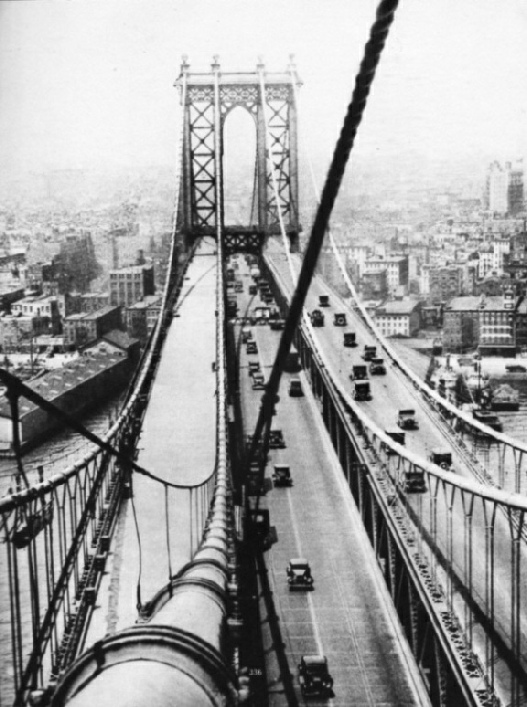
The Brooklyn Bridge
“BROOKLYN BRIDGE, at the time of its building, had the longest single span of any bridge in the world. Completed in 1883, the bridge and approach viaducts have a total length of 5,989 feet, or more than a mile. The two suspension towers were based on caissons sunk in the bed of the river. At a height of 118 feet, each tower divides into two Gothic (or pointed) arches, each 120 ft 6 in high and 31 ft 6 in wide, through which pass the carriageways and car tracks of the bridge.”
